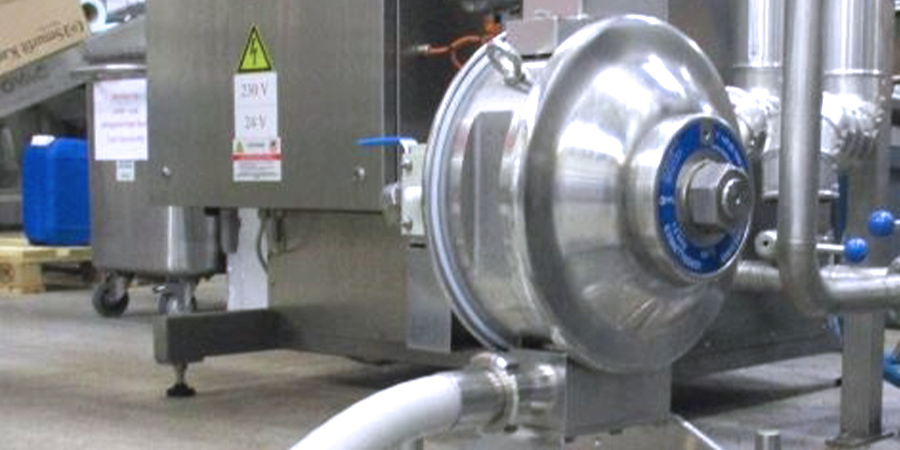Specifying Your Air Operated Diaphragm Pump
AN AIR OPERATED DOUBLE DIAPHRAGM PUMP IS A VERY VERSATILE AND FORGIVING PUMP WHEN IT COMES TO WHAT IT CAN ACHIEVE.
One pump can cover a multitude of applications; however there are some guidelines that can help with getting the right pump first time.
WHAT DO YOU NEED TO KNOW:
- Name of the liquid that is going to be pumped.
- Flow Rate required
- Viscosity at pumping temperature
- Specific Gravity
- Any particulates in the liquid – what size – abrasive or not.
- Maximum / Minimum Temperature of the Liquid being pumped, or any cleaning agent used to clean the pump.
- Where is the liquid in relation to the pump – above or below the Inlet of the pump, how far from the pump.
- Where are you moving the liquid to – above or below the pump, how far away from the pump.
- Diameter of any existing or proposed suction / delivery pipework
- Any certification requirements
A Flotronic AODD+ payback is far faster than a traditional AODD!
Discover how quickly you can recover your costs—use our AODD Maintenance Payback Calculator to see your return in just a few clicks!
NAME OF THE LIQUID THAT IS GOING TO BE PUMPED:
- Use Chemical Compatibility Charts to select a suitable material for pump Body & Manifolds (Wetted Parts)
- Use Chemical Compatibility Charts to select Diaphragm Materials of construction, normally PTFE faced, though solid Nitrile or EPDM is also available.
- Wetted O Rings in Manifolds, etc will normally follow the material on the face of the Diaphragm.
FLOW RATE REQUIRED:
- Use the company Flow charts to select a suitable pump model in our range.
- Avoid selecting a pump at the top of its range, especially on a 24/7 application – aim to use a pump at between 25% and 75% of its performance.
- Flow Charts Available Here.
VISCOSITY AT PUMPING TEMPERATURE:
- Flow curves are calculated on water with viscosity of 1Cps.
- Higher Viscosity will affect the pump performance – check friction losses in any pipework before specifying a pump.
- Best option can be to over size the pump and aim to run it slowly.
- Also recommended to position the pump as close as possible to the source of the liquid and keep any pipework as straight as possible, with a minimum diameter same as the pump inlet.
SPECIFIC GRAVITY:
- Flow rates are calculated on water with an SG of 1
- Higher SG’s can affect pump performance especially if there is a Suction Lift required.
ANY PARTICULATES IN THE LIQUID – WHAT SIZE – ABRASIVE OR NOT:
- Check ball / manifold clearances are large enough to let any particles through the pump.
- If the liquid is abrasive, consider upgrading the pump with hardened parts to resist the abrasion.

MAXIMUM / MINIMUM TEMPERATURE OF THE LIQUID BEING PUMPED, OR ANY CLEANING AGENT USED TO CLEAN THE PUMP
- Select Pump material to resist the max temperature – for example Stainless Steel / PTFE pumps are rated to 135°C, while Polypropylene is limited to 80°C.
- Select Diaphragms to resist Max Temperature – standard 100°C – High Temperature 135°C
WHERE IS THE LIQUID IN RELATION TO THE PUMP – ABOVE OR BELOW THE INLET OF THE PUMP, HOW FAR FROM THE PUMP.
- If the liquid is below the pump, you have a Suction Lift – Our AODD Pumps normally have a dry suction lift of 3.6 meters and a wet lift of 8.2 meters.
- If the liquid is in tanks above the pump – consider using reinforced diaphragms if the liquid is more than 5 meters above the pump.
WHERE ARE YOU MOVING THE LIQUID TO – ABOVE OR BELOW THE PUMP, HOW FAR AWAY FROM THE PUMP
- Diaphragm pumps work on a 1:1 ratio so the pump can achieve a liquid head the same as the air pressure given to the pump – 2 Bar Air Pressure will give a 20 meter head.
- Work out the friction losses in your pipework against the required flow rate to calculate the delivery head required.
DIAMETER OF ANY EXISTING OR PROPOSED SUCTION / DELIVERY PIPEWORK
- Inlet and outlet on the pump should be the same size as any pipework where possible.
- Avoid having an inlet connection on the pump larger than the diameter of the suction pipework.
ANY CERTIFICATION REQUIREMENTS.
Flotronic have pumps with all of the certifications below in their range.




